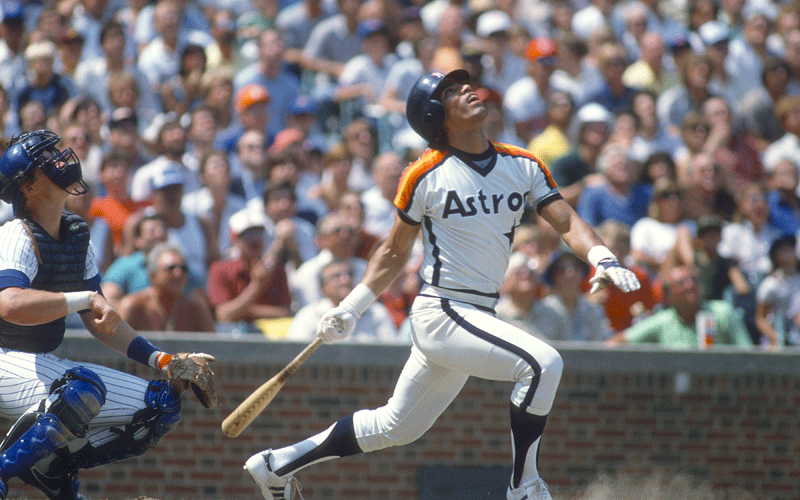Baseball’s Hairy History

Watching a baseball game earlier this season, I was startled to see the Houston Astros clad in their throwback 1975 uniforms. These outfits now have a retro cool feel but, at the time, they were the ugliest duds in all of sports, an atrocious mash-up of all the Disco Era’s most gawdawful design fails – shimmering white jerseys with Day-Glo yellow and orange horizontal stripes offset with fat lettering and a navy blue star.
Seeing these uniforms that day transported me back the 1970s, that era of massive societal upheaval, when many of the institutions we held dear came crashing down around us. The upheaval of those tumultuous times made its way onto the baseball field, transforming the very look of a sport that really hadn’t changed since the 1900s.
As late as the 1960s, owners used their dictatorial powers to enforce a league-wide fashion code. All players – including stars like Willie Mays and Mickey Mantle – had to look like the boy next door, with military-style brush cuts and freshly shaved faces. This decree was so draconian that Jim Bouton, in his tell-all book Ball Four, wrote that one year he cut his locks during spring training tryouts, fearing: “The difference between making the club and not making it might be the length of my hair.”
But by the 1970s, the owners’ once powerful hold over their vassals was under attack, and players began to assert their own individualism, not only in contract negotiations but on the field as well. When the St. Louis Cardinals’ surly power hitter Dick Allen, who had many run-ins with management over his productive career, fomented a one-man mutiny by refusing to shave, thus becoming the first player since Wally Schang in 1914 to sport facial hair.
A famous 1970 Sports Illustrated cover depicts Allen with his “fearsome” Black Power afro, mutton chops and moustache – sticking it to his team and the league. Accompanying the photo ran the ominous headline: “Baseball in Turmoil,” referring not only to Allen’s off-field issues but also the chaos he was causing by flouting the fashion rules. Rebelling against the establishment, breaking with tradition and making an outrageous style statement all at the same time – could you get more ’70s than that?
After Allen’s defiance, there was no going back. With players sensing their newfound power, the hair kept getting longer and the ’fros became so prodigious, some could barely jam their baseball hat on top. Eventually, all but a few teams gave in to the cultural mores. In 1972, eccentric Oakland As owner Charlie Finley went so far as to give his players bonuses if they grew moustaches and even held a promotion that allowed fans with facial hair to get in to the game for free.
When the As went on to win that year’s World Series against the Cincinnati Reds – a team that still enforced the old code – New York Times columnist Arthur Daley couldn’t conceal his distaste, writing off the best team in baseball as a horde of “hairy creatures.”
Daley’s epithet could easily apply today, as bushy beards and long hair are as ubiquitous on baseball rosters as they are in society, not to mention low-cut baggy trousers, untucked jerseys and flat brim hats tilted to one side. While I don’t see it as the decline of civilization, the least players could do is appear on the field like they cared about their appearance and remember that they’re representing a professional sports franchise, not a weekend softball team.
Thankfully, there is one team that adheres to an old dress code; the New York Yankees still refuse to allow players to wear beards or long hair. When late team owner George Steinbrenner instituted the rule back in the late ’70s, outfielder Lou Piniella tried to persuade The Boss that if long hair was okay for Jesus, why not for the players? Without missing a beat, Steinbrenner coolly pointed to a nearby swimming pool and told Piniella, “If you can walk across that water, you can wear your hair any way you want to.”
Makes me nostalgic for those days when those autocratic owners were still in fashion.